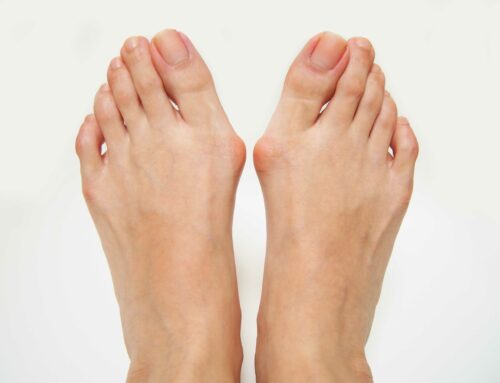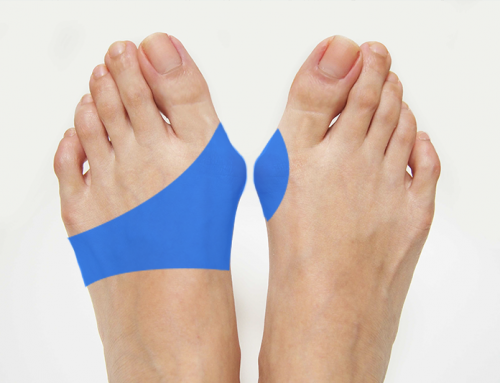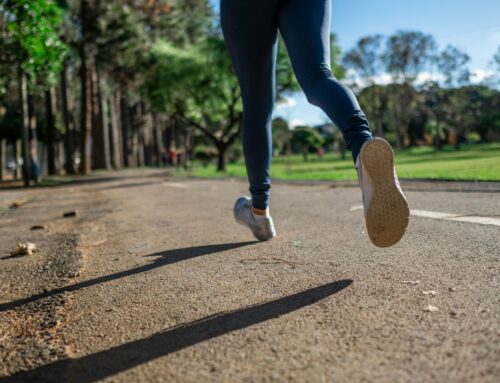If you’ve seen a bunion develop on a parent’s or grandparent’s foot, you may be wondering, Is it just a matter of time before you get one too? And more importantly, can you prevent bunions from forming in the first place?
The answer is: not always. But there’s good news—while some bunions are inherited, there are steps you can take to reduce your risk, slow progression, and keep your feet healthy and pain-free for as long as possible.
What Is a Bunion, Exactly?
A bunion is a bony bump that forms at the base of the big toe when the joint becomes misaligned. Over time, the toe drifts inward toward the others, causing the joint to stick out. This misalignment can lead to swelling, pain, and difficulty wearing shoes or walking comfortably.
Bunions are often progressive, meaning they tend to get worse over time without treatment. They’re more common in women, people with a family history of bunions, and those who wear tight or narrow shoes frequently.
Can You Prevent Bunions Entirely?
If you’ve inherited a foot structure that predisposes you to bunions, such as flat feet, low arches, or overly flexible joints, you may not be able to fully prevent bunions. However, early action can go a long way in delaying or even avoiding their development.
In other words, you can’t always change your genetics, but you can change your daily habits and footwear to protect your feet.
Practical Tips to Help Prevent Bunions
If your goal is to prevent bunions or stop an early-stage bunion from getting worse, here are a few smart strategies to follow:
1. Choose the Right Footwear
Avoid shoes that squeeze your toes together or put excess pressure on the front of your foot. Look for:
- A wide toe box
- Low or no heels
- Good arch support
Shoes that mimic the natural shape of your foot allow for healthier alignment.
2. Use Orthotics If Recommended
Custom orthotics can help correct imbalances in foot structure, such as overpronation. Properly supporting your arches helps distribute weight evenly and reduces pressure on the big toe joint.
3. Stretch and Strengthen Your Feet
Just like any other part of the body, your feet benefit from movement. Toe stretches, toe spreads, and foot-strengthening exercises can help maintain flexibility and control, especially in the small muscles that stabilize your toes.
4. Monitor for Early Signs
If you notice your big toe starting to lean inward or a small bump forming at the joint, don’t wait. The earlier you catch a bunion, the more you can do to stop it from progressing.
5. Rotate Your Shoes
Wearing different types of supportive shoes throughout the week can prevent overuse of certain foot structures and reduce strain.
When Prevention Isn’t Enough
Even if you’ve done everything right, sometimes bunions still form. That’s because once the joint starts to shift, no amount of stretching or shoe swapping can bring it back into alignment.
If a bunion is already interfering with your daily life, causing pain, stiffness, or overlapping toes, the best solution may be minimally invasive bunion surgery.
At The Bunion Cure, our advanced procedure corrects the deformity at its source without the need for screws, plates, or large incisions. Most patients walk out the same day, without crutches or long downtime.
Take the First Step Toward Healthier Feet
While you can’t always completely prevent bunions, you can protect your feet by making smart choices early, and know that expert help is available if a bunion does develop.
Schedule a free consultation with The Bunion Cure today to assess your risk and explore your options. Whether you’re focused on prevention or looking for a long-term fix, we’re here to help you move pain-free.

Reviewed By Dr. Sullivan
Dr. Jordan Sullivan, DPM, is a board-certified podiatrist at Northwest Surgery Center specializing in minimally invasive foot and ankle procedures. He’s passionate about helping patients get back on their feet faster with less downtime.
Learn more about Dr. Sullivan here.





